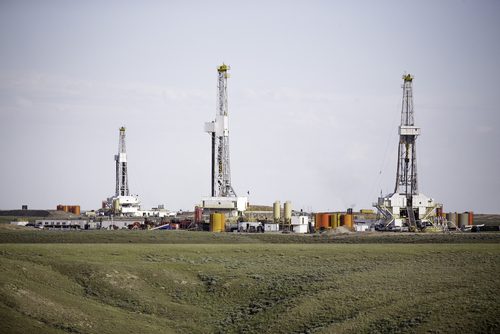A person considering a career in emergency management, disaster preparedness or natural resources may wonder, “Is fracking safe?” Depending on the source of the information, a person may read a lot of different things about the environmental safety of fracking. Here are some things to keep in mind about the safety of fracking.
Related resource: TOP 20 EMERGENCY MANAGEMENT DEGREE ONLINE PROGRAMS
What Fracking Is
Fracking is short for hydraulic fracturing. It refers to an engineering process in which oil or natural gas is extracted from deep underground. Hydraulic fracturing has actually been around since the 1940s, but it came into more widespread use in the 1990s when a horizontal drilling method was discovered. Opponents of the process argue that scientific evidence shows fracking releases considerable amounts of air, water and soil pollutants that are harmful to the environment, animals and human health.
How Fracking Works
The process of fracking begins with a vertical well drilled 1 to 2 miles into the Earth. The perimeter is encased in steel or cement. Once the vertical opening reaches the place where oil or natural gas has collected, the hole is turned 90 degrees, and the drilling begins on the horizontal plane. The horizontal section can be up to 1 mile long. This part is also encased in cement or steel. Engineers then pump fluid into the well at 9,000 pounds per square inch, which is enough to fracture the surrounding rocks. The oil or gas can move through those cracks. The fluid, called slickwater, can contain detergents, sand, alcohol, lubricant, acid, salt, and disinfectants at a concentration of up to 2 percent.
Waste Generated By the Fracking Process
There are multiple waste streams generated by fracking. The first is flowback liquid, which can include radioactive material, hydrocarbons, and heavy metals. It may be pumped back into the earth or stored on-site in tanks. The second stream is formation water, which was in the fractured areas of the rocks. It can contain radon, which is difficult and expensive to treat. The process can also generate surface water pollution and airborne pollutants.
Known Contaminants Released By Fracking
Scientists from the Environmental Protection Agency have discovered many known toxins and carcinogens at fracking sites and in downstream areas from fracking wells, explains Live Science. Methane is one such contaminant. At several sites, it was detected at high enough levels to be declared an immediate hazard requiring mitigation. Another contaminant found at fracking sites is respirable silica. This is glass in small enough particles that it can be breathed into the lungs, causing lung disease. Researchers also detected benzene, a known human carcinogen, at more than 15 fracking sites. Epidemiologists found that living near a fracking site causes a two- to three-fold increase in a person’s risk of developing asthma.
As people continue to burn through petroleum products, procedures such as fracking will become one of the few ways of getting them. A person who is concerned about the safety of fracking could work with environmental organizations, activists and concerned politicians in order to make changes that discourage or even remove the economic policies that make fracking possible. Knowing the answer to, “Is fracking safe?” could help a person decide on a career path or identify an issue that they feel passionate enough about and want to make a positive change for the future.
